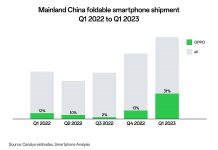Tv24 Desk: Here are the Top 10 (plus one) digital commerce enhancements you can make to successfully navigate the post-COVID-19 environment.
Even before COVID-19 changed the way B2B customers order and purchase products, they were clamoring for an e-commerce option from their distributors. The pandemic has only accelerated that trend, leaving late adopters behind and wondering how they can catch up.
Catching up is becoming harder — yet more necessary — with each passing year. 2020 created an inflection point among companies that have invested in digital technologies and those that didn’t, but there are steps that a lagging distributor can take now to narrow that gap and become competitive.
That was the message of the recent MDM Webcast, The event’s featured speaker, Shannon Hane, senior product marketing manager for Adobe, said the numbers speak for themselves when it comes to the need to get digital as quickly as possible.
Hane cited McKinsey research that shows 96% of businesses have changed their sales model to favor online selling. Of that vast majority of companies, 75% believe that it is just as effective as what they had before COVID-19, while 89% are likely to sustain the shift 12-plus months after the pandemic.
What’s more, with B2B buyers planning to purchase more online in 2021 — according to Digital Commerce 360 research — and digital-native millennials taking more control of purchasing, there’s never been a better time to sell online.
“COVID-19 has accelerated the timetable to digital commerce and B2B, and it looks like it’s here to stay,” Hane said. “I know this has been a difficult time with lots of change, but you can use the pandemic to position yourself for future success. A lot of businesses are doing this by investing in digital, even though their sales are down. A Gartner survey in July revealed that 53% of the respondents expect revenue declines over the next 12 months, but 86% plan to increase their digital investment. So the question isn’t, ‘Should I be investing in digital commerce?’ Instead, it’s ‘How can I use it to differentiate my business and build a competitive advantage for this post-COVID world?’”
Top 10 Digital Commerce Enhancements
The question, of course, is where and how to invest. Hane gave her Top 10 areas for digital investment, with a “basic” approach (the minimum needed to enter this realm) and a “differentiated” approach (for companies looking to take this a step further).
- Empower your customers with comprehensive self-service account management. At the basic level, that means providing online ordering, quoting, shipping and invoice tracking, among other services. Differentiated capabilities including moving all account interactions online.
- Streamline the path to products by optimizing your UX . The basic UX includes a clean website for customers to search. A differentiated UX is about making it even easier for users to find information, perhaps even offering AI-driven search.
- Take the pain out of research with rich product content. At its basic level, rich product content includes better product descriptions such as images, pricing and availability. The next level up, differentiated, adds features such as video, 3D and AR/VR visualization.
- Personalize the buying experience. The basic buying experience features customer-specific pricing and catalogs, among other attributes. The differentiated one might include AI-driven product recommendations, search, offers and content.
- Make purchasing even easier. Basic purchasing would include quick order forms, SKU uploads, requisition lists and more. Differentiated purchasing might add subscriptions/automated replenishment, end-to-end quote management and such features as IoT or voice ordering.
- Make mobile a priority to help your customers & sales team. A basic mobile platform would have a responsive site. A differentiated one would have a progressive web application, for example.
- Integrate your digital channel and branch locations. Basic integration centers on a customer’s ability to buy online and pick up in-store (including curbside pickup). Differentiated integration would add full inventory visibility across locations and more.
- Supercharge your sales team to support their customers. At the basic level, that means your sales admin can respond to quotes, create orders and troubleshoot issues. At the differentiated level, they can chat, host virtual showrooms and more.
- Become a data-driven organization. A basic data-driven organization offers standard commerce KPI reports. A differentiated one offers cross-channel data integration, editable and sharable dashboards and much more.
- Test out new business models and audiences for growth. At the basic level, this means targeting your traditional customer base. At the differentiated level, this means developing entirely new market segments.
A bonus tip, Hane said — and one of the most critical aspects of improving your digital capabilities for the post-COVID world — is to invest in your team.
“You need to have some digital expertise in-house to guide your strategy,” Hane said. “I think you need to have a digital commerce leader in your company. And they need to have a team so that they can manage your strategy, work with outside partners on implementation, analyze your data and work across the organization to bring more capabilities online.” Source : mdm





























